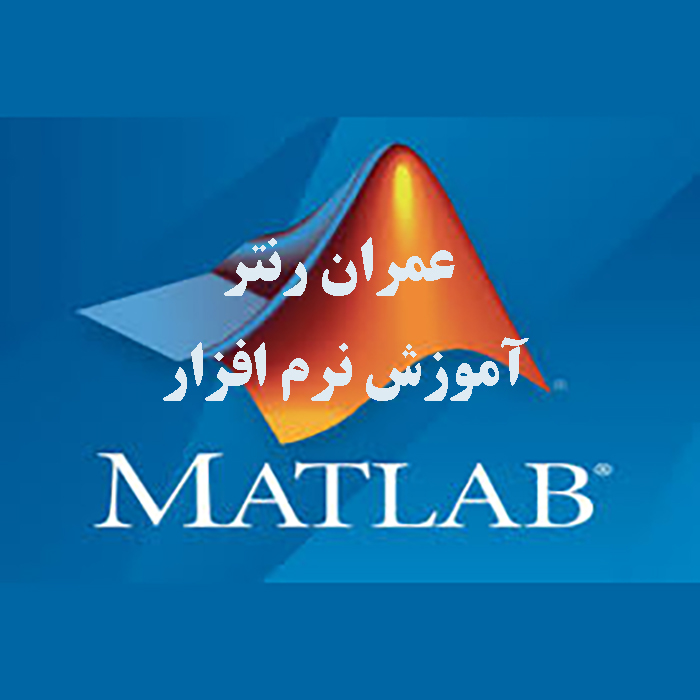توضیحات
آموزش جامع نرم افزار متلب ( MATLAB ) شامل بیش از 40 منبع ارزشمند نزدیک به 25000 صفحه
دانلود کتاب کاربردی در فروشگاه آموزشی و دانلودی عمران رنتر
زبان برنامه نویسی و نرم افزار متلب ( MATLAB)، بدون شک، امروزه یکی از ابزارهای حیاتی برای مطالعات علمی در رشته های مختلف علمی و فنی به حساب می آید.
MATLAB مخفف Matrix Laboratory است و یکی از محبوب ترین زبان های برنامه نویسی در جهان است.
MATLAB یک زبان برنامه نویسی قدرتمند و همچنین محیط محاسباتی تعاملی است. MATLAB اجازه می دهد مجموعه ای از دستورات را در یک فایل نوشته و اجرایی کنید.
A Guide to MATLAB for Beginners and Experienced Users
A Guide to MATLAB for Beginners and Experienced Users
This book is a short, focused introduction to MATLAB, a comprehensive software system for mathematics and technical computing. It will
be useful to bothbeginning and experienced users. It contains concise
explanations of essential MATLAB commands, as well as easily understood instructions for using MATLAB’s programming features, graphical capabilities, and desktop interface. It also includes an introduction
to SIMULINK, a companion to MATLAB for system simulation.
Written for MATLAB 6, this book can also be used with earlier (and
later) versions of MATLAB. This book contains worked-out examples
of applications of MATLAB to interesting problems in mathematics,
engineering, economics, and physics. In addition, it contains explicit
instructions for using MATLAB’s Microsoft Word interface to produce
polished, integrated, interactive documents for reports, presentations,
or online publishing.
This book explains everything you need to know to begin using
MATLAB to do all these things and more. Intermediate and advanced
users will find useful information here, especially if they are making
the switch to MATLAB 6 from an earlier version.
Essential MATLAB for Engineers and Scientists
This book presents the MATLAB computer programming system as a problemsolving tool for scientists and engineers who have no prior knowledge of computer
programming. It is based on a teach-yourself approach; readers are frequently
invited to experiment for themselves in order to discover how particular constructs
work. The text was originally written as a companion to a hands-on course at the
University of Cape Town. Most of the students taking the course had little or no
computing experience and came from disadvantaged backgrounds. Consequently
the book assumes that readers have no knowledge of computing, unlike most
similar books on MATLAB.
MATLAB is based on the mathematical concept of a matrix. Again, unlike most
comparable books, this text does not assume any knowledge of matrices on the
part of the reader; in fact the concept is developed gradually, as the context
requires it. Since the book is written primarily for scientists and engineers, some
of the examples of necessity involve some first-year university mathematics, particularly in the last chapter. However, these examples are self-contained, and
omitting them will not detract from the development of your programming skills.
MATLAB can be used in two distinct modes. In keeping with the present age’s
craving for instant gratification, it offers immediate execution of statements, or
even groups of statements, in the Command Window. For the more patient, it
also offers conventional programming by means of script files. This book makes
good use of both modes. On the one hand, it encourages the use of cut-andpaste techniques to take full advantage of the interactive Windows environment,
while on the other hand also stressing programming principles and algorithm
development, with the help of structure plans.
Although most of MATLAB’s basic features are covered, the book is neither an
exhaustive nor systematic reference manual, since this would not be in keeping
with its informal style. Constructs, such as for and if, are not therefore always
introduced in their most general form initially, as is common in many texts, but
rather more gradually in the most natural places throughout the book. On the
other hand, many texts present these constructs somewhat superficially; this
book attempts to discuss them thoroughly. For the curious, there are helpful
syntax and function quick references in the appendices.
MATLAB by its nature lends itself to a number of pitfalls for the unwary beginner.
The text warns the user of these wherever possible.
The fundamentals of MATLAB are motivated throughout with many examples, from
a number of different scientific and engineering areas, such as simulation, population modeling, and numerical methods, as well as from business and everyday
life. Beginners, as well as experienced programmers wishing to learn MATLAB as
an additional language, will therefore find plenty of interest in the book.
Emphasis is also placed on programming style throughout the book—writing clear
and readable code.
Each chapter concludes with a summary of the MATLAB features introduced in
the chapter.
There is a large collection of exercises at the end of each chapter, gleaned from
the author’s many years’ experience of running hands-on programming courses
for beginners and professionals alike, in BASIC, Pascal, C, C++ and MATLAB.
Complete solutions to many of the exercises appear in an appendix.
There is a comprehensive and instructive index.
For the second edition, in working my way through Version 6, I found so many
interesting new features (for example, GUIs) that I was unable to resist incorporating most of them into the text. Consequently I decided to split the book into
two parts. Part I contains what I consider to be the real essentials; Part II has
everything else.
In this edition I have attempted to retain the style and approach of the first
edition: informal, aimed at beginners, and with plenty of examples from science
and engineering. Several of the chapters from the previous editions, which
feature the essential elements of MATLAB, have been brought together to form
Part 1. In addition, I have added two new chapters. These are Chapters 3
and 14.
Chapter 3 describes a structured step-by-step method to achieve top-down
design and algorithm development. The steps in the design process are applied
in several examples. The intention is to get students thinking about how they
need to formulate a problem to successfully utilize MATLAB. Chapter 14 on
Dynamical Systems provides straightforward applications of the tools described
and examined in the first 10 chapters. The problems solve are on relatively simple dynamical systems of engineering and scientific interest. Since this book
is an introductory course on MATLAB, a tool for technical computing, the examples are mathematical formulations of problems from first courses in science
and engineering. The purpose of the text is to provide instruction on how to
solve the mathematical problems needed to gain insight into science and engineering. Thus, these eleven chapters (skipping over the sections marked with
an asterisk) are sufficient for a first course in MATLAB. (For the computer and
programming-calculator wise students, the chapters on more advanced topics
should help them get into the application of MATLAB to solve the more complex
problems confronted in upper division courses at university and, subsequently,
on the job.)
This book can be used as a course textbook or for student self-study. For the
latter, it is a useful supplemental text for any course in science and engineering.
The instructor, of course, provides the necessary encouragement, enthusiasm
and guidance to help the student begin to learn the power of MATLAB to solve
numerous problems that engineers and scientists formulate in terms of mathematics and, hence, help the student begin to master MATLAB. The book is
written as a sequence of exercises, and the reader would benefit from doing
the exercises within the text as well as doing some of the exercises at the end
of the chapters.
To the student: I recommend that you read the text while you are at your computer so that you can do the exercises with MATLAB. It will be useful and fun for
you to go through the exercises with the purpose of discovering how MATLAB
does what it is commanded by you to do. You learn how to use a tool like MATLAB through hands-on experience. This, of course, is a good thing because it is
quite pleasurable to learn by doing and, hence, discover how to use MATLAB to
enhance your learning of engineering and science by tapping the wealth of capability at your disposal in MATLAB. You will discover immediately that computer
tools produce correct answers only when commands and input data are accurate and correct (no typographical errors are tolerated). ‘Debugging’—finding
the errors in your typed command lines—is a big part of the game that is played
when you create computer programs to solve your technical problems. Going
from the development of a structured-plan to the translation of your plan into a
series of commands in MATLAB, debugging and, ultimately getting answers is
very rewarding as you will discover. Enjoy!
1- ویژگی های اصلی متلب
آشنایی با محیط متلب
عملیات ریاضی ساده
عملگرهای ریاضی متلب
فضای کاری متلب (Workspace)
فرمت نمایش اعداد
انواع متغیرها
نامگذاری متغیرها
متغیرهای ویژه
علائم نقطه گذاری و جملات توضیحی
اعداد مختلط
بعضی از توابع ریاضی در متلب
راهنمای متلب
فایلهای متنی یا m-فایلها
مدیریت فایل در متلب
2- آرایه ها
3- توابع و عملیات ماتریسی
4- عملیات منطقی و رابطه ای
5- کار با رشته های کاراکتری
6-تصمیمگیری و کنترل روند، استفاده از حلقهها و دستورات شرطی در متلب
7- ایجاد توابع در متلب Functions
8- تجزیه و تحلیل فوریه
9- نمودارهای دو بعدی
10- چند جمله ای ها
11- برازش منحنی و درونیابی
12- نمودارهای سه بعدی
13- پردازش تصویر
14- پردازش تصویر تکمیلی
15- جعبه ابزار Symbolic
16-ایجاد رابط گرافیکی کاربر GUI







نقد و بررسیها
هیچ دیدگاهی برای این محصول نوشته نشده است.